The Secrets of the Lourizán Palace
Hello everyone, once again!
Today I come with a very special something ready for you...
Yesterday morning, before I left to go to University, I went on a mini-excursion to Lourizán and its magical palace. All of it currently forms part of the Centre of Environmental and Forestry Investigations. Let's start!
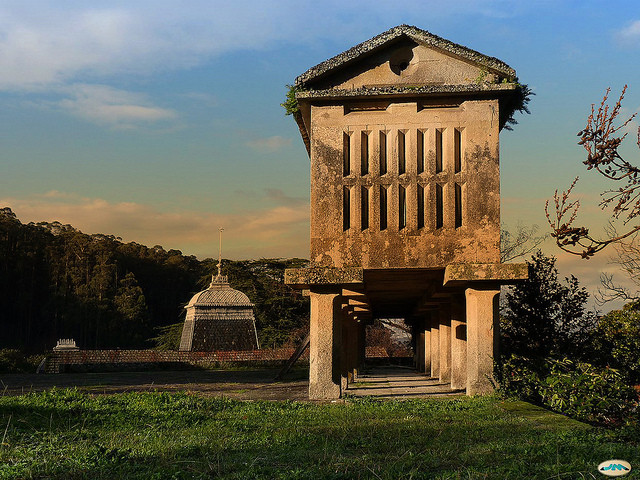
The Lourizán Palace and the Investigation Centre can be found in Pontevedra, Galicia, in front of the ENCE Factory - but it doesn't smell! Great news. Close by to the palace, there is also the Areeiro Phytopathological (study of plant disease) Station. The area is smaller than that of the Lourizán Palace, but the Xunta is more esteemed, so they say.
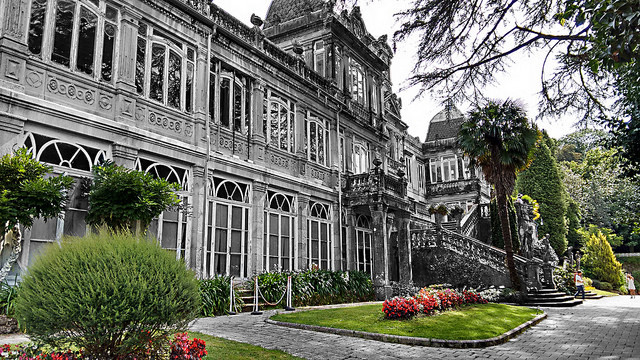
Let's start at the beginning...
The primary use of this estate (which is no more or no less than fifty-four hectares of garden) was to serve as a farm. Today, the only remains that testify to that, is the old pigeon house. Later on, Gerano de la Fuente Domínguez would build the Palace. Eugenio Montero Ríos, Minister of Grace and Justice, used this manor house as his summer house - what a house! The Spanish lawyer and politician also used this place as a hub for political meetings. In fact, the Treaty of Paris was negotiated in one of these halls (the treaty in which the islands of Cuba, Puerto Rico, the Philippines and Guam were handed over).
Little by little, Montero Ríos decided to plant trees throughout the entire area, thus creating diverse and wide gardens that covered more and more terrain. The place soon became famous, until it became the natural wonder it is today.
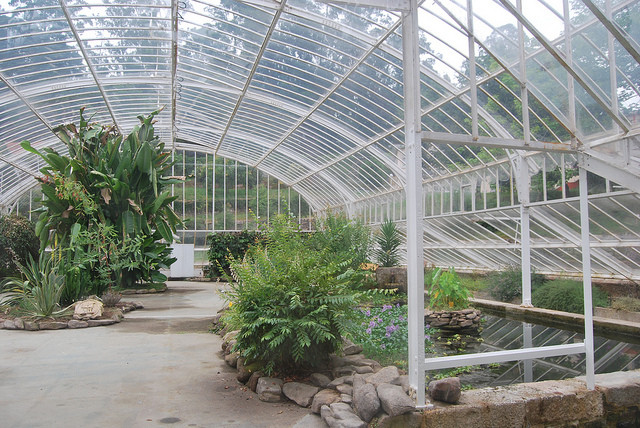
We visited this place with Adán Domínguez (better known as "el chivas"). He knows the place like the back of his hand because he used to work in the research laboratories. Then I will go into detail about what his function actually was. We had been planning to visit him for about a month and a half, but for one reason or another it never came to be. Well, we drove to Lourizán, we crossed a huge fence (Montero Ríos had it built) to get in and then we went up the road for two minutes, and we arrived. Watch out! Along the way there are many newts that usually get run over and die. Here we saw that the whole enclosure was adorned with diverse fountains and, as you can imagine, many plants and trees. They are not the only object of study, though.

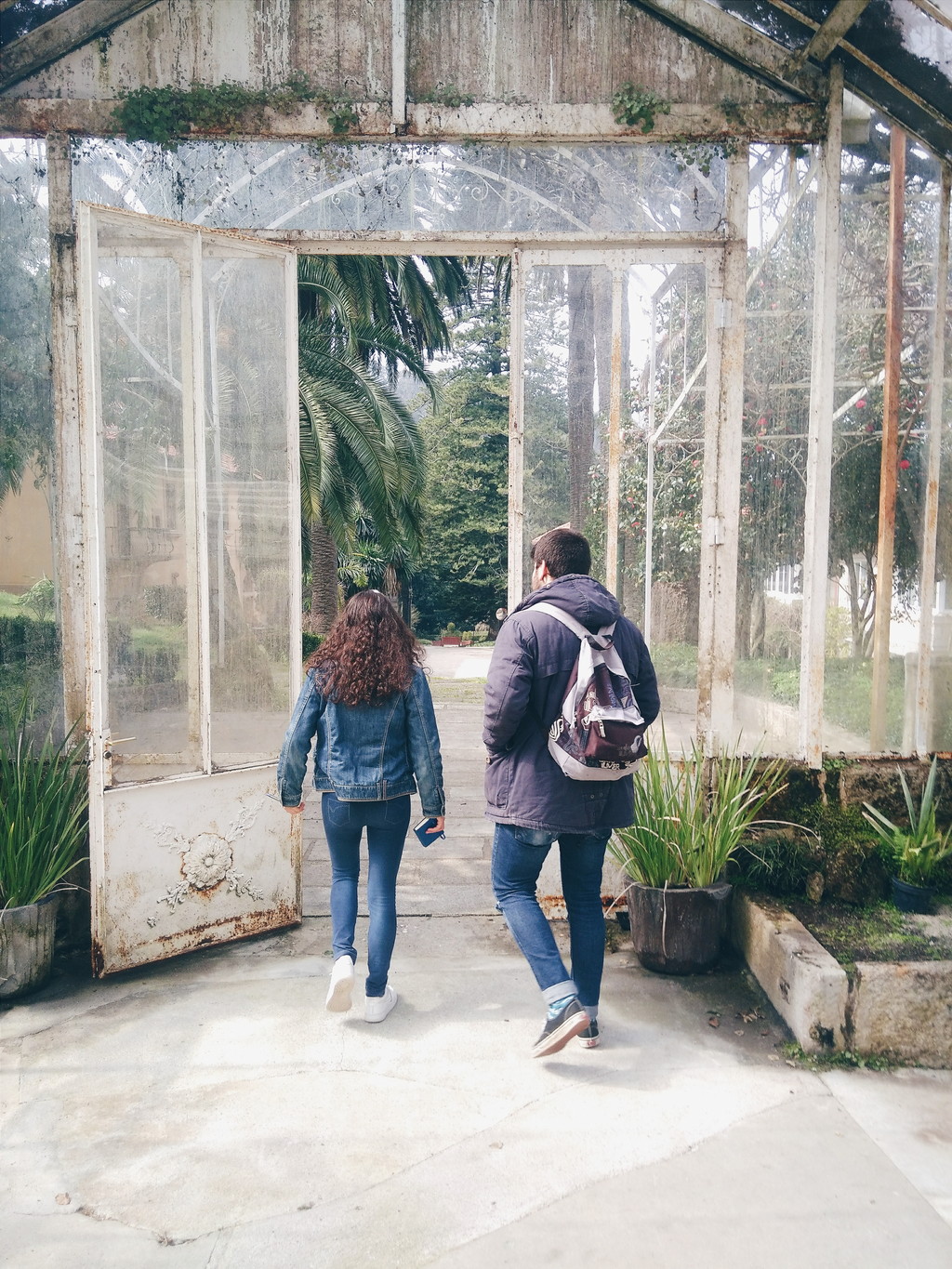
The first thing we visited was a glass greenhouse which smelled of fresh earth as soon as we entered. As you can see in the picture, it is full of different types of plants, like it was almost an infinite variety. Each plant has a label with its name (most of them are in Latin) and all have a drip irrigation system (only in the greenhouse). We were in the greenhouse taking pictures and enjoying the different smells of the flowers.
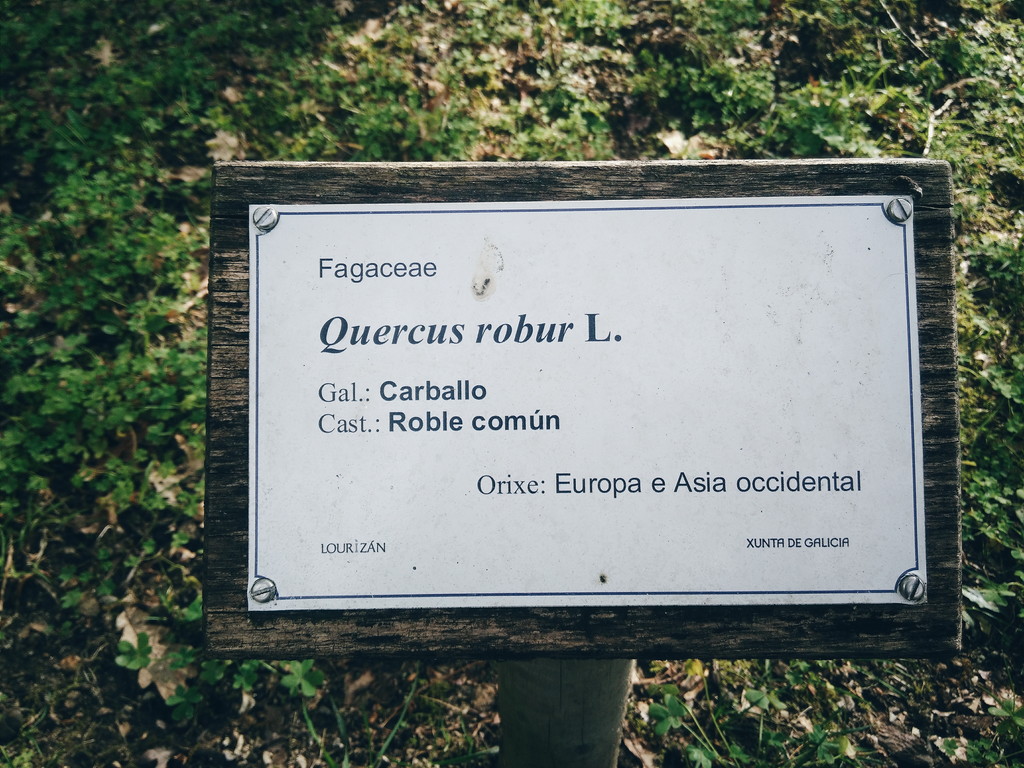
We left the greenhouse and carried on walking. The whole area smells like jasmine and is surrounded by Camelios. Camelia is one of the flowers that represent Galicia, so Lourizán if filled with Camelios in order to promote the culture related to cultivation, care and knowledge about this flower. In fact, there is a "Camelia Route" in Galicia that goes through different locations like the Castro Park in Vigo, the Museum-House of Rosalía de Castro in Padrón, the Santiago de Compostela Avenue and of course, the Lourizán Palace.
Walking through the terrain, we realised that there were several greenhouses. Adam explained to us that the first greenhouses (i. e. those closest to the entrance) are used by people who study and the greenhouses upstairs are used by people who work. There is also an institute that trains Forest Rangers. I don't know exactly how many people can work in the Lourizán Palace, but I would say about 200. I'm talking nonsense probably, because I don't know, that was just the impression I got. Gardeners, researchers, maintenance, teachers...
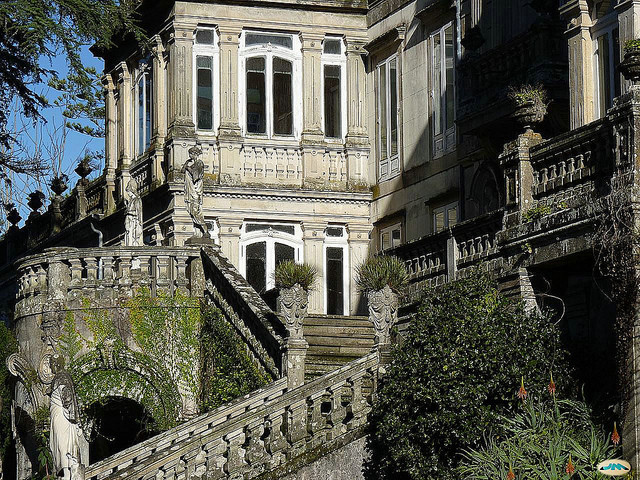
Adam also explained that a couple of years ago, when they started to defend the rights of the wildlife, they decided to create a plot of trees called the Community Park. Why? This plot is a symbol that represents the agreement that all of the Autonomous Communities of Spain have come to. In this way, the plot has four trees that are characteristic of each autonomous community.
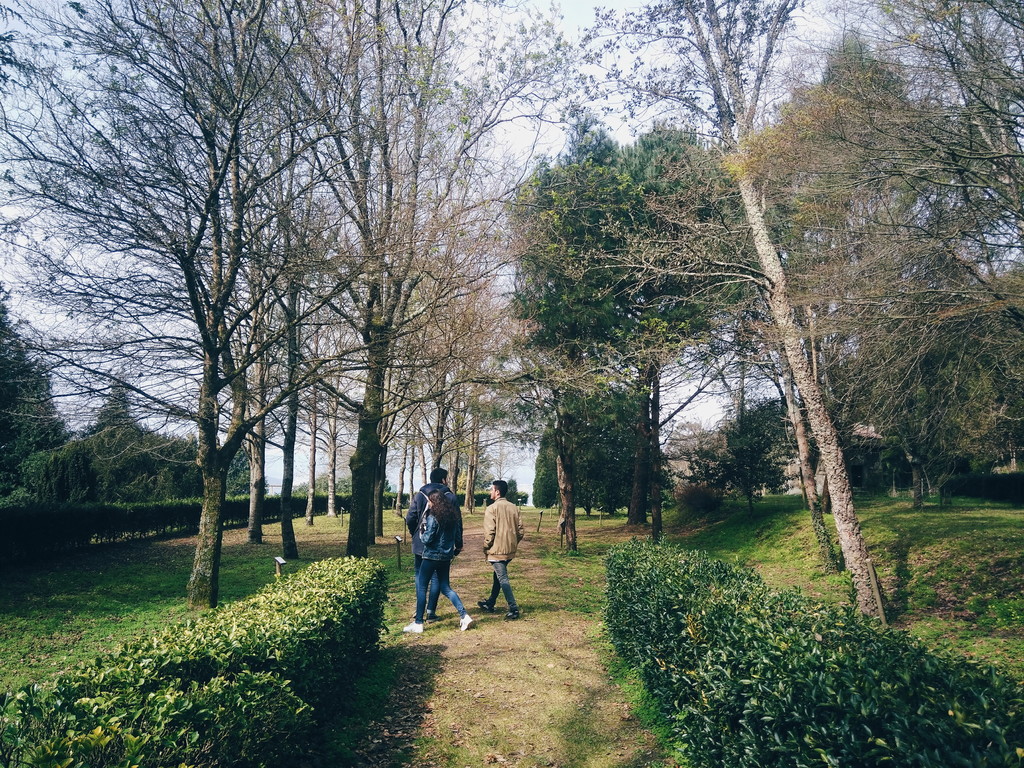
Something which caught my eye a lot was that in Lourizán, there is a tree which was a Spanish candidate for the "European tree of the year", but came in 2nd place. Don't you think it's funny that there are these kind of awards? I had no idea. In the end, the tree that won the 1st place was a pine-chestnut tree. Yes, one tree grew inside another. Anyway, here you have the tree that claimed 2nd place.
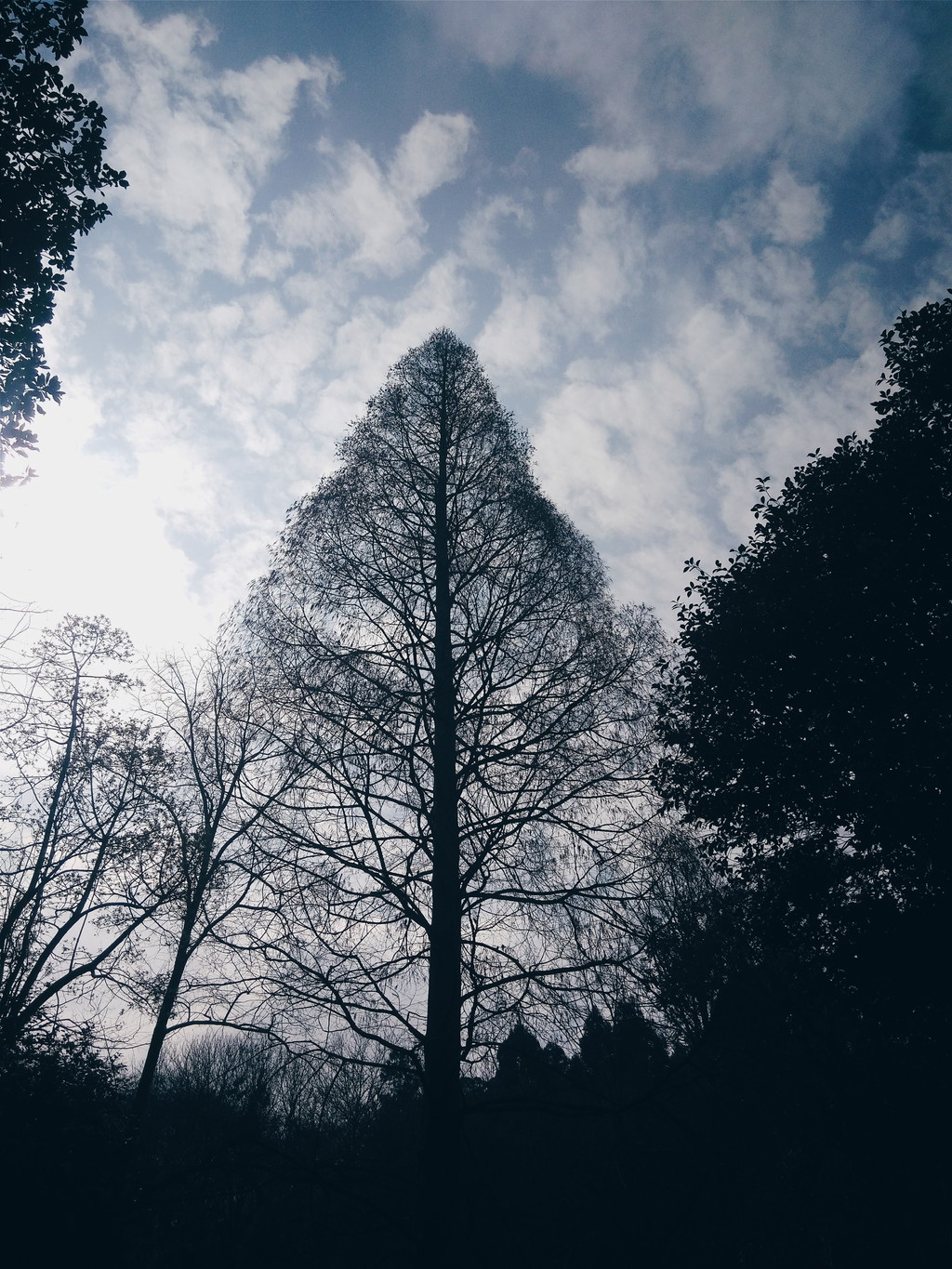
Without a doubt, the thing I loved the most was the Palace itself. Architecturally, it is beautiful. The thing that stands out the most is the entrance, two staircases that lead to the main door, all adorned with statues. You cannot see inside, and unfortunately it is not open to the public. Adam told us that there are rooms that show insects, for example. Before, you used to be able to access the higher floor via a marble staircase but now they have walled it off because somebody broke the glass to enter the palace. The doors of the palace have an engraving with the letters "E" and "A" which are the two letters of the initials of Montero Ríos and his wife. The Spanish lawyer lived in this palace during summer with all the maintenance staff. He wanted to be buried here and so they did, although I think they dug him up later but I don't know why. Here are the photos. The truth is that I love the pictures we took yesterday, they have a lot of color and a lot of life. The palace is even more impressive than these photos make it seem, and it is surrounded by vegetation.
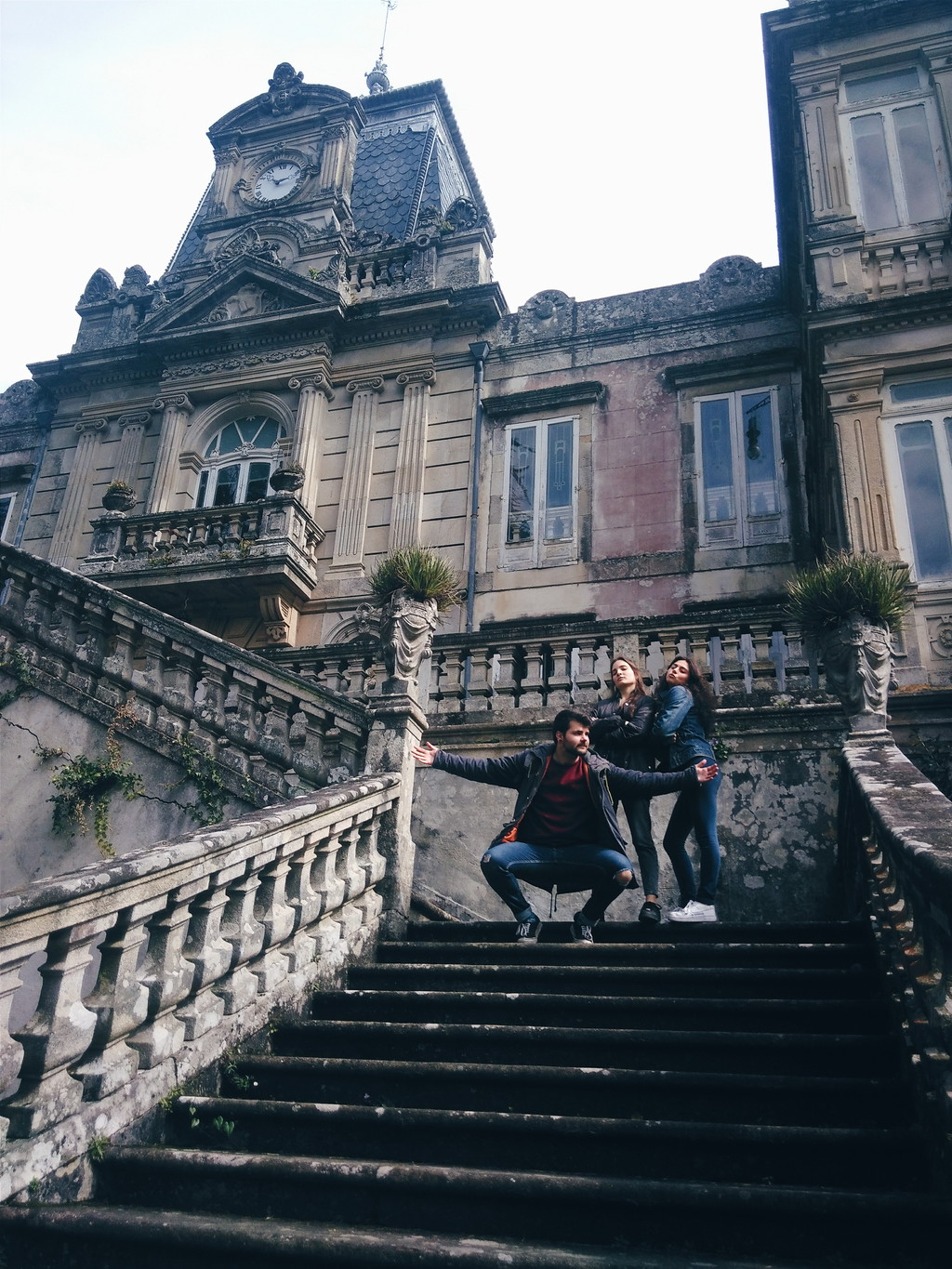

We continued walking through the nature, there were many fountains and I wanted a drink because I was dying of thirst, but the water was not drinking water - so no one can even think of having a drink. We arrived at a huge table overlooking the entire estuary of Pontevedra (views the Factory of Ence ruins a little, but... ) and Berto came up with the idea that it was an ideal place to have a BBQ!
And after walking more, we then arrived at the Fountain of Mirrors, from the 19th century. It is very special, it looks like the little house of a Hobbit or a gnome. It is a grotto with a fountain inside and there are two mirrors inside. The water here is not drinking water either. It is a place in total harmony. Another fountain that we also saw was the Fuente de los Tornos, from the 17th century, but this one was not so impressive.
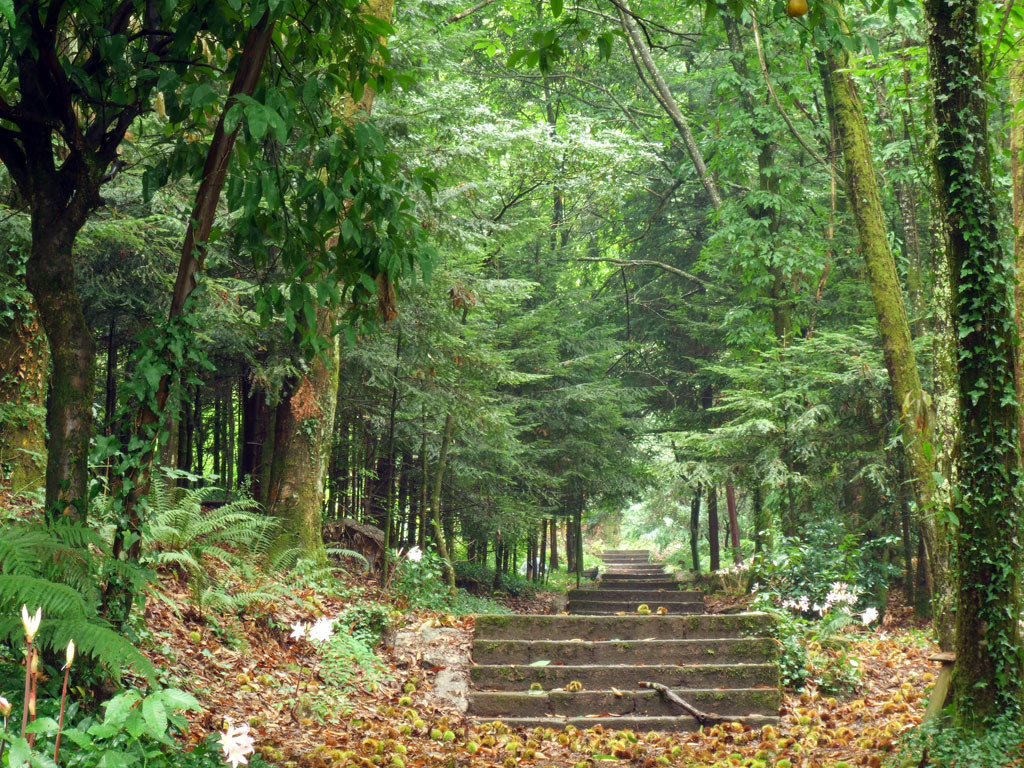
Afterwards, Adam was teaching us about the entire investigative area. He taught us about the Fire Department, the Chemistry lab also known as the "one with floors", the phytopathology (pathology of plants) centre, the drying room for seeds and an enormous raised granary that they use as a warehouse. Then he explained to us about what he used to be doing when he worked in Lourizán. He worked in the Forestry Department and he dedicated his time to finding cures for diseased pine trees, so he genetically classified these trees to create stronger trees. They crossed the breeds of tree and finally they developed a SUPER PINE TREE! Wow... Adam played God a little bit... He informed us that he did not only investigate pine trees but all types of trees and even insects.
Lourizán has species of trees and plants from all over the world, including the biggest ferns that I have ever seen with my own eyes... Lucy was a model so we could get an idea of its size!
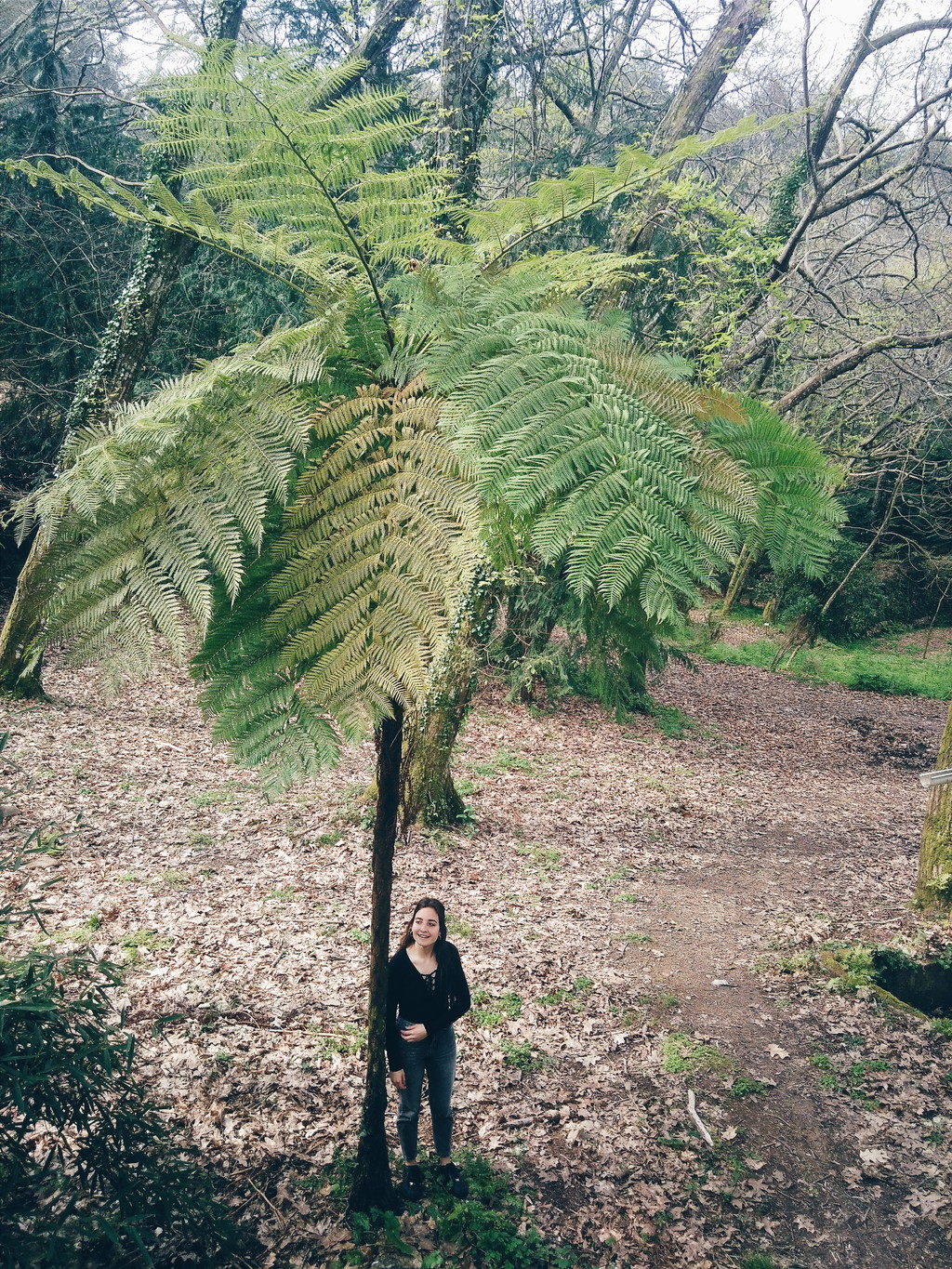
If you like botany, this is the palce for you. It is a magical place that you have to visit without a doubt, and if it is the beginning of spring then all the better: the whole place is filled with flowers. Furthermore, visiting here doesn't cost a dime, guys. And it doesn't take much time either! With two hours, you'll have some to spare.
And that is all for this entry today! Share this if you're interested or if you liked it. You don't have to go far to be able to enjoy such beautiful places like this, as you have seen in the photos.
Thanks again for reading!
Photo gallery
Content available in other languages
- Español: Los secretos del Pazo de Lourizán
- Italiano: I segreti del Pazo di Lourizán
Want to have your own Erasmus blog?
If you are experiencing living abroad, you're an avid traveller or want to promote the city where you live... create your own blog and share your adventures!
I want to create my Erasmus blog! →




























Comments (0 comments)